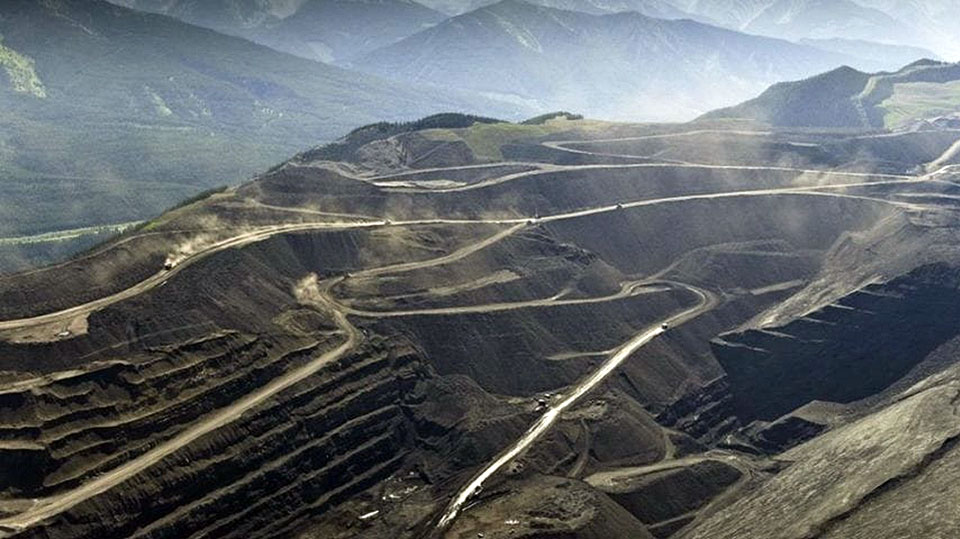
Australian mining corporations are already preparing to open-pit mine in the Bighorn area of the Rocky Mountains. Since 1976 Alberta’s Coal Development Policy has guided land use over many aspects of coal development, including open-pit coal mining and coal exploration in some of Alberta’s most environmentally sensitive areas. This policy was developed with extensive public consultation, to create a fair balance between environmental protection, economic development, and the social needs of all Albertans.
But on June 5, Jason Kenney’s United Conservative government rescinded the Coal Development Policy. Recent documents show that at least seven months before announcing the cancellation, the provincial Minister of Environment and the Minister of Economic Development, Tourism, and Trade held conversations with coal companies that supported development in these sensitive areas. The lack of public consultation in parks and lands use runs counter to the UCP election commitments to increase consultation in parks and land use decisions and to increase tourism in Alberta.
The area involved provides water for downstream communities, which also flows into Saskatchewan and Manitoba. It provides habitat for species at risk including bull and cutthroat trout, grizzly bear, bighorn sheep, and mountain goat. It is a high-value recreation area and supports local communities and economies, including ranching and agriculture. Kate Morrison from Canadian Parks and Wilderness Society (CPAWS) gave a description of what this open-pit mining entails, in a webinar organized with the Council of Canadians. Trees will be clear cut and explosives and massive machinery will be used to remove earth so that coal seams can be accessed from the top down. Mining waste, or spoil, will be dumped into valleys. The resulting landscape changes, such as mountain top removal and mining and valley fills, increase the risk of flash flooding, Native species are slow to recolonize the reclaimed land and planted trees may perform poorly in the compromised soil.
One of the major impacts is decreased water quantity and quality. Southern Alberta is already a dry region that has drought years, and it is unclear how water will be allocated. A number of toxic chemicals are involved in the mining process, but perhaps most concerning is the release of selenium which can cause reproductive failure in fish and elk. These effects have already been observed in British Columbia, near Teck corporation’s Elk Valley coal mining operations. Municipal water supplies near the site have already been contaminated.
This leaching of selenium can continue for hundreds of years, and Morrison predicted a 90 percent collapse in the population of cutthroat trout.
There are also significant health effects for humans. Studies from the Appalachia region of the U.S., an area which is practically synonymous with coal mining, show that the dust has high levels of silica. The surrounding area had higher rates of cancer, heart and lung disease, kidney disease, and birth defects. This did not just affect the miners.
Those arguing that the economic advantages may outweigh some of these disadvantages should take a lesson from the experience with oil and gas. Prices can be volatile with natural resources, and the companies can leave huge liabilities in environmental and health costs. Rose Marie Sackela told the CPAWS/CoC webinar that Alberta is on the hook for $260 billion in costs for orphaned and abandoned wells. The companies should be cleaning up this mess, but it may be the taxpayers who end up with the job. Sackela also pointed out that the radium mines in the north, where she has done some research, have a similarly bad record.
The oil and gas experience also undermines the argument that mining will provide royalties. The conservatives collected hardly any royalties, and Municipal Affairs Minister Tracey Allard is presently giving 3-year tax holidays for new wells, new pipelines, and more. The pattern is not good.
Jobs? Sackela said that open-pit mining would create only a few jobs because as in the tar sands, the industry makes extensive use of robotics.
An obvious question is how this move to coal mining will affect targets for reducing carbon emissions. The coal here is for metallurgic, not thermal, use — meaning it will be used in steel production — and is destined for export rather than Canadian consumption. While government and industry can argue that this arrangement means greenhouse gas emissions in Canada will not increase significantly, there will still be a huge impact in the destination countries and, therefore, globally.
The UCP’s whole approach to this issue has sneaky and aggressive. For example, of the 164 provincial parks the government delisted from protective status during the summer, sixty are in areas slated for coal mining. In another example, the government announced $120 million to the David Thompson highway for a twinning project [constructing a parallel road], which Sakela and others believe will actually be a regional support road for mining exploitation.
Another issue is how the Kenney government is streamlining approvals. The Alberta Energy Regulator is completely funded and operated by industry and is able to receive and approve an application in one day. This makes it enormously difficult for opponents to file an objection, especially average people who may not know how to do so.

There are a number of related matters, but one that stands out is that Canada needs a federal water policy. So far, Ottawa has consistently avoided this issue.
There is some urgency to this fight — hearings into the Grassy Mountain Coal Project are underway now, in which a panel including the Alberta Energy Regulator and the Impact Assessment Agency of Canada will gather information to determine the environmental impacts of the project and recommend whether it should be approved and on what conditions. It is important to stop Grassy Mountain because it will start a domino effect.
So, how can we stop Kenney? Morrison and Sackela recommend people “write, write, write and call” their federal MP [Member of Parliament] and provincial MLA [Member of the Legislative Assembly]. Morrison specifically suggested appealing to the federal government to overrule Kenney. Sackela identified the issue of water as another avenue for opposition — since Alberta has an agreement with Saskatchewan and Manitoba to guarantee a certain amount of water reaches them, they might have legal rights. She suggested appealing to those provincial governments as well as to the Prairie Provinces Water Board.
A key area of concern in all of this is the effect on Indigenous communities and their consent to the development. Latasha Calf Robe of the Káínawa Blood Tribe said, “consultation has taken place, however that does not translate to community support or community level consultation. Our leadership has chosen not to include that, so there have been no community level referendums. There has not been an opportunity for the community to address all of our concerns and have them inputted in these agreements and addressed in a meaningful way.” Wacey Little Light, who is also Káínawa, expressed concern that this has been done behind the scenes.
Clearly, there is a possibility of building a strong alliance between environmental groups and Indigenous peoples, to fight the coal mining agenda.










